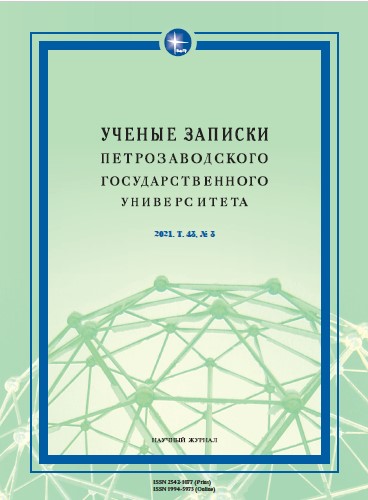ПОВТОР КАК ХУДОЖЕСТВЕННЫЙ ПРИЕМ В ЛИТЕРАТУРЕ СТИЛЯ «ПЛЕТЕНИЕ СЛОВЕС»: К ВОПРОСУ О ЗАИМСТВОВАНИИ ГИМНОГРАФИЧЕСКИХ ТРОПОВ
REPETITION AS A LITERARY DEVICE IN “FLOWERY STYLE” WRITINGS: THE ISSUE OF HYMNOGRAPHIC TROPES BORROWING
Author(s): Svetlana ShumiloSubject(s): Christian Theology and Religion, Middle Ages, Comparative Study of Literature, Theory of Literature
Published by: Петрозаводский государственный университет
Keywords: “flowery style"; Epiphanius the Wise; Constantine of Preslav; Metropolitan Cyprian of Kiev; literary repetition; hymnographic allusions;
Summary/Abstract: The research relevancy is determined by insufficient study coverage of the “flowery style” and its literary sources, as well as wide disagreements among scholars over its nature. This article contains the analysis of literary repetitions as the major trope of the “flowering style” with special focus on their literary sources, which the author discovers in hymnographic texts. The paper intends to establish the “flowery style” succession from liturgical poetry and also examine allusion and reminiscence as two leading literary devices for the poetics of the medieval saints’ lives written in the “flowery style”. The author used the methods of comparative, source study and hermeneutic analysis, as well as the linguistic analysis of literary texts. Examining literary repetitions in the “flowering style” of the medieval saints’ lives led to several conclusions. Firstly, reminiscence and allusion to the church divine service and ceremonial are the most important devices for medieval hagiographers. Secondly, literary repetition is the main trope borrowed from liturgical poetry. Thirdly, repetition performs several functions in the medieval saints’ lives. Thus, it serves as a keyword for expressing an author’s certain idea – for instance, Epiphanius the Wise uses it in The Life of St. Sergius of Radonezh to promote the message and demonstrate this saint’s gradual growth and improvement. Coupled with antithesis and amplification, repetition enables the author to emphasize especially significant moments of the work and enhance text expressiveness by appealing to liturgical poetry. Addressing repetition as a literary device borrowed from hymnography gives a different view of the “flowering style” nature, writers’ objectives and the evolution of medieval literature in general.
Journal: Ученые записки Петрозаводского государственного университета
- Issue Year: 43/2021
- Issue No: 3
- Page Range: 92-101
- Page Count: 10
- Language: Russian

